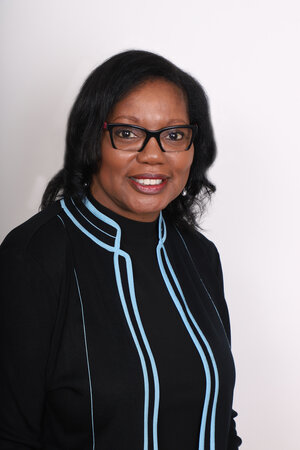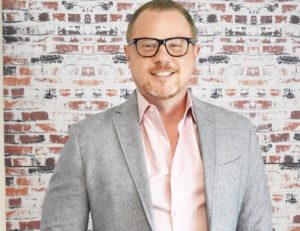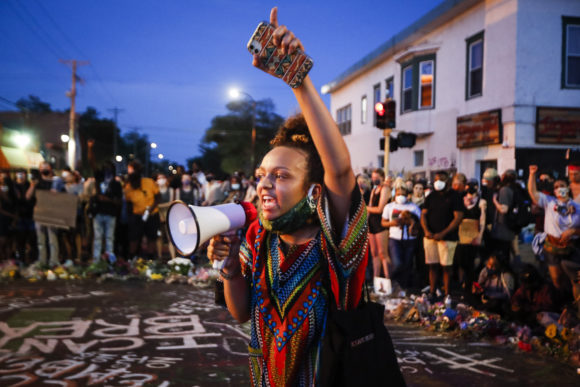The marches and protests across the globe sparked by the death of George Floyd by Minneapolis police are presenting the country with opportunities to confront the racism and inequality that African-Americans confront every day.
As executive director of the National African American Insurance Association, Margaret Redd works every day to create and expand opportunities for African-Americans in the insurance business.
According to Redd, the “significant amount of attention being given to the plight of African Americans” across the globe is unprecedented.
“There’s never been a moment like this. I think most people would agree with that. And so what we do at this moment is yet to be seen,” commented Redd.
Redd is impressed that it is not just African-Americans calling for change but a “very diverse group and audience of people” embracing the need for change.
The attention may be historic but will it matter to the insurance industry?
Redd sounds like a person with doubts. For while she is quick to praise honest intentions and efforts, she is also critical of the scarcity of tools for measuring what is happening that could reveal if real progress is indeed being made for blacks.
She asks why more corporations don’t treat increasing black employment like they treat other strategic goals by obtaining C-suite and board buy-in, setting measurable objectives, and holding people accountable.
And she has witnessed how some corporate diversity and inclusion efforts tout progress on hiring and promoting more women but are silent on blacks.

According to 2016 data from the Bureau of Labor Statistics, African-Americans make up 11.9% of the country’s total workforce and 11.1% of the insurance workforce. Blacks fare a bit better in the claims area—15.1% of adjusters are African-American— but a bit worse in underwriting— 9.6% of underwriters are African-American.
In banking, 11.5% of the workforce is African-American, 10.4% in real estate, 10.4% in professional services, 14.3% in food manufacturing, 12.3% in retail, 20.1% in transportation/utilities and 15.1% in education and health, according to the same BLS data.
According to a 2018 study from the Independent Insurance Agents and Brokers of America, only 2% of established agencies have at least one African-American principal. However, about 13% of agencies established within the last five years have at least one. Overall just 4% of all independent agencies have an African-American principal or senior manager— compared to the 88% with white agency leadership.
Journey to 2018
In the spring of 2018, global insurance broker Marsh commissioned a research project to examine the experiences of African-Americans working in the insurance industry. The main goal was to understand how to get more blacks employed in the insurance industry.
The research was conducted by Dr. Leroy Nunery III, a human resources, education and management consultant and founder of Plus Ultre. The project was under the direction of Alex Amonett, Global Inclusion, Diversity & Colleague Experience Leader for Marsh.
The resulting report, “Journey of African-American Insurance Professionals,” reflected participation by members of Redd’s NAAIA group. The primary research included 312 online survey responses, 25 interviews, and seven focus groups conducted over a six-month period prior to its publication in September 2018.
When asked if there are greater obstacles for African-Americans in the insurance industry compared to those for other minorities, 70% of those surveyed for the report either strongly agreed or agreed.
Participants ranked the key barriers to entry into the insurance business by African-Americans as: lack of exposure to the industry; lack of networks; lack of experience; racial bias; lack of educational preparation and gender bias.
Race would often be a factor in hirings, promotions and new assignments, as well as in whether they were included in key meetings, social events or opportunities with customers, according to those surveyed.
The report included comments from African-Americans in the industry talking about their experiences with racism and racial bias, both overt and subliminal, and talking about how race has affected their individual career journeys.

“I believe the level of unconscious bias that exists for African-Americans leads more people to react adversely towards this particular race of people,” said one participant. “We are often starting from way below benchmark before we even begin to engage with a business partner, client, or colleague, and therefore have to spend a lot of energy disproving their bias before we can even get down to the business of what we came here to do.”
“Rarely do I encounter overt racism,” said another participant. “Most of the time it’s people’s implied biases that hold African Americans, females, and people of color back. Usually, the top of the house (senior management) says all the right things, but it doesn’t get practiced at the middle management level.”
“Tell You What I See’
Flash forward from 2018 to the death of George Floyd in 2020, a time of heightened racial tensions along with, until recently, a strong economy with high employment figures (before the pandemic hit).
Did the 2018 report help? Do the people involved in it think there has been any progress towards the goal of increasing the number of African-Americans in insurance?
While she values the 2018 study and the support that Marsh has given her organization, NAAIA’s Redd questions whether real progress has been made in attracting more African-Americans into the industry.
“When we look for quantifiable measures, I just don’t think that we can give you that,” she said candidly. “Anecdotally, I don’t think the dial has moved very much.”
She said she does not see progress when she looks for African-American diversity in the C-suite, when she looks at insurance executives and leaders. “I don’t think the dial has moved very much and, in some cases, it might have moved back a bit.”
She acknowledges that she has no real numbers to back up her gut feeling. “I can just tell you what I see,” she said.
Given the lack of hard metrics, Redd said she “grabs at other ways of measuring progress.”
She believes that more dialogue is happening and that NAAIA’s interaction with industry partners is stronger than it’s ever been. However, that doesn’t mean the numbers have changed. “It’s a measure; not the measure but it’s a measure,” the NAAIA executive said.
At the same time, Redd feels African-Americans still find themselves in the same place year over year over year.
NAAIA was founded in 1997 on the recognition that African-Americans weren’t represented very strongly in this industry and that there was no strong network for those who were in the industry to get to know and support one another. “The basis for which this organization was founded, that issue still persists today,” Redd said.
Marsh’s Amonett said the 2018 report has been used as a consulting tool, as a strategic guide for employers and as material for NAAIA workshops and events focused on deep discussions around systemic racism and bias and better practices around hiring black candidates. It has helped NAAIA foster better dialogue, additional engagement and attract partnerships.
He acknowledged that diversity and inclusion don’t always move at the pace he and others would like but believes that the George Floyd protests can serve to “refuel that spark in recognizing we need to be moving a lot faster than we are, and we need to be putting aside different red tape and politics that are currently getting in the way of some of the challenges.”
At the Top
Among its observations, the 2018 report stressed that if there is to be real change in diversity of the workforce, the effort must have support at the top.
Carrier Management reported on a number of insurance executives that have spoken out against police brutality and in support of the racial equality. Since the death of George Floyd. Marsh & McLennan CEO Daniel Glaser was among the first. So did CEOs of American Family, Allstate, AIG, Chubb, CSAA, Hartford, Progressive, Erie, Zurich North America, State Farm, Utica National… the list goes on.
Jack Salzwedel, chair and CEO of American Family Insurance, said society must take action on multiple levels and in new ways. “It also requires people of privilege—white people—to stand up for and stand with our communities like we never have before,” he said. “I’m privileged. I have a voice. I want to use it for good.”
“We all have to make a difference by standing with those who are being prejudiced. We need to participate in honest dialogue that bridges understanding and arrives at shared actions and responsibilities,” Chubb CEO Evan Greenberg said in an email to the insurer’s U.S. employees.
“These times are a stark reminder that our society still suffers from far too many cases of distrust, hatred and racism. This is not the world we should accept as a society,” State Farm said. “We must push ourselves to influence change and create compassion.”
Of course, not all insurance leaders heeded the message that they should have a message at times like this.
“For anyone who chooses to let this moment pass as if it’s just a fleeting thought, I think they’re totally missing the mark. It will be an unfortunate consequence to them and the business that they serve,” said Redd. She said that’s “not a threat, it’s a reality.”
“I think the bigger picture here is this is not something that’s going to disappear tomorrow or in a couple of weeks, months or even years,” said Amonett.
Amonett said he believes this moment requires firms that support real change to boost their commitment. “They have to be willing to invest the time, the money and the resources to address these issues,” he said.
The Marsh executive said that for those CEOs not speaking out, there are consequences to being silent. “You lose engagement, you lose the trust you have built with clients, with colleagues, with the community,” he said, suggesting those who do not speak out come across as being “apathetic” to what is going on.
Redd said she is encouraged by the insurance CEOs and those from companies like Uber who are speaking out and including in their messages “very specific steps” that they are taking to make a difference for the long term.
“That to me is the kind of reaction that we need more of across this industry,” she said.
Plotting Progress
Counting the CEOs who speak out is perhaps not the best way to measure the commitment to change of an industry or a company. But in the real world of promoting blacks in insurance, one problem is that there are not many metrics available, according to Redd.
While some insurers may track numbers privately, a few insurance organizations do reveal more than intentions in their efforts to increase African-American representation within their ranks. American International Group is one — AIG’s website has a “percentages report” that breaks out employment by minority categories (10.4% of AIG associates are African-Americans).
Progressive Insurance reports the minority percentage of its new hires and current employees. In 2018, 27% of Progressive’s new hires were African-American, compared to 17% for current employees. It also reports on promotions by race, ethnicity and gender.
Allstate’s Prosperity Report discusses diversity and shares that 17.2% of employees are African-American.
Zurich publishes an extensive human resource factbook that explores the company’s employment by gender, generation and geography but not race.
The Independent Insurance Agents and Brokers has a task force on diversity and the organization researches and reports on the status of minority employment, including for African Americans, in insurance agency ranks. “Many agencies continue to struggle to convince an already limited talent pool that insurance is a promising career option,” wrote Alex Dopazo, chair of the IIABA Diversity Council, last February. Progress in the agency system has been “driven mostly by newer agencies that have been established within the past five years,” Dopazo added, noting (as reported above) 13% of new agencies have at least one African-American principal.
More and more employers including insurers and brokers are promoting diversity and inclusion within their organizations. They often include employee support groups for blacks and other minorities as well as supplier diversity initiatives. These efforts show a lot of movement around hiring women, gays and lesbians, disabled citizens and veterans. The Insurance Industry Charitable Foundation hosts a high-profile Woman in Insurance Conference with regional forums. While the global Festival for Diversity and Inclusion (DIVE), now in its sixth year, addresses a range of diversity issues including race and culture, gender equality is a main focus.
Insurance Journal asked if these and other D&I campaigns with women and other constituencies have resulted in blacks being overlooked compared to other minority groups.
Redd was shaking her head yes before the question was completed.
“I would say that that’s a fact and I think that a lot of the stats would speak to that,” she said. She suggested that some companies have realized their minority goals through the selection of women rather than blacks to higher positions.
“I’m certainly happy for women but it doesn’t address the issue of African-Americans,” Redd said.
She said the support for women has come about more easily and sooner than the “the real measurable support that we need to see for African-Americans.”
Buy-In from Above
Redd wonders about commitment to African-American recruitment and support at the top. She said whenever a company is starting a new division or setting new goals, the initiatives need approval from the C-suite and the board. “They’ve got that buy-in at the top. They have a strategy, they have a plan, they have measurable objectives, they have accountability,” she said. They do what they need to do and track the results to succeed, she said.
So, Redd asked, why is a goal of hiring more African-Americans any different? “That’s my question. We struggle year over year with: how do we do it, how do we make it happen?” she said. She thinks companies should use the same mentality they would for any strategic initiative that is considered critically important to the organization.
Amonett agreed that every strategy needs measurement, adding that “sometimes you have to get creative about it.” He maintained that there are internal labor market data that can track growth with respect to diversity. “We can track the way that we hire, the way that we promote,” he said.
Whether the diversity development program helped people get promoted can be measured. Organizations can also use engagement and pulse surveys, he said.
“You should have targets in place and goals in place over a strategic amount of time,” Amonett said.
He said it can sometimes get complicated when companies equate targets with quotas. He said the challenge is to educate employers on what a true meritocracy offering equal opportunities really is within organizations where existing performance evaluation and promotional systems are rife with white male bias. People of color and women are often promoted based on performance versus potential, according to the Marsh diversity officer. However, the company then ends up with a lot of white men being seen as higher potential because they match the personalities of their white male leadership team.
Setting targets helps “knock down some of those barriers” for diverse communities, Amonett added.
Missing Reputation
It’s no secret that the insurance industry ‘s reputation has been an obstacle for recruitment among certain generations and communities. “We’re not going to be thought of off the top as a sexy, interesting industry,” admitted Redd.
But she said she doesn’t think the reputation is any worse in the black community than it is elsewhere, although years ago when redlining was occurring it probably was. The problem with insurance and the black community is not that the industry has a bad reputation but that it doesn’t have much of a reputation at all in the black community.
“If you don’t know the game, you can’t play the game,” Redd said, suggesting that African-Americans are largely unaware of the opportunities in insurance.
The industry remains a secret even though, according to the 2018 report, the overwhelming majority of blacks who have enjoyed successful insurance careers would recommend the industry to others.
Redd was asked if some of these African-American insurance professionals might feel differently today.
No, she said, because what has been on the national news is “not a wake-up call for black America” as it is for the rest of the nation. “We’ve lived this and understood this and been part of this all of our lives,” the NAAIA executive director said.
Photo: Protesters gather at a memorial for George Floyd where he died outside Cup Foods on East 38th Street and Chicago Avenue, Monday, June 1, 2020, in Minneapolis. Protests continued following the death of George Floyd, who died after being restrained by Minneapolis police officers on May 25. (AP Photo/John Minchillo)
Was this article valuable?
Here are more articles you may enjoy.


 Wells Fargo Sued by Ex-Manager Who Said Bank Faked Diversity
Wells Fargo Sued by Ex-Manager Who Said Bank Faked Diversity  Poorer Americans Dropped Federal Flood Insurance When Rates Rose
Poorer Americans Dropped Federal Flood Insurance When Rates Rose  Rare Weather Warning Issued as Strong Gusts Fuel Colorado Wildfire Threats
Rare Weather Warning Issued as Strong Gusts Fuel Colorado Wildfire Threats  LA Fires Push Insurers’ 2025 Disaster Losses to $107 Billion
LA Fires Push Insurers’ 2025 Disaster Losses to $107 Billion 